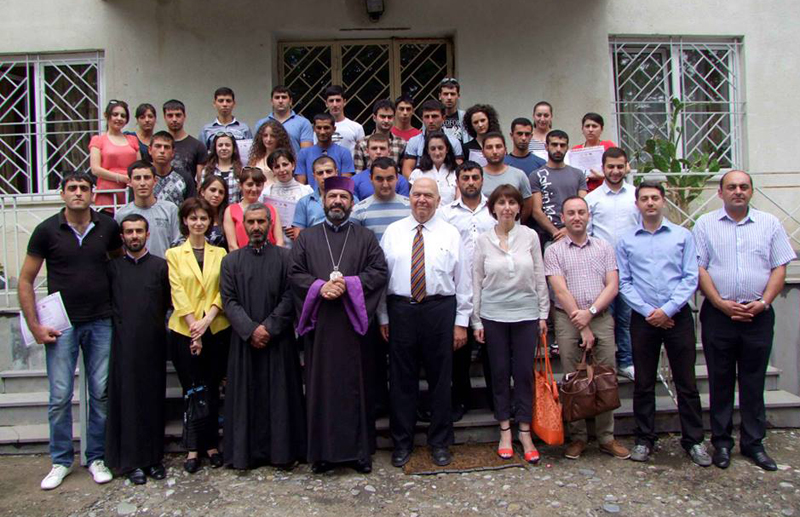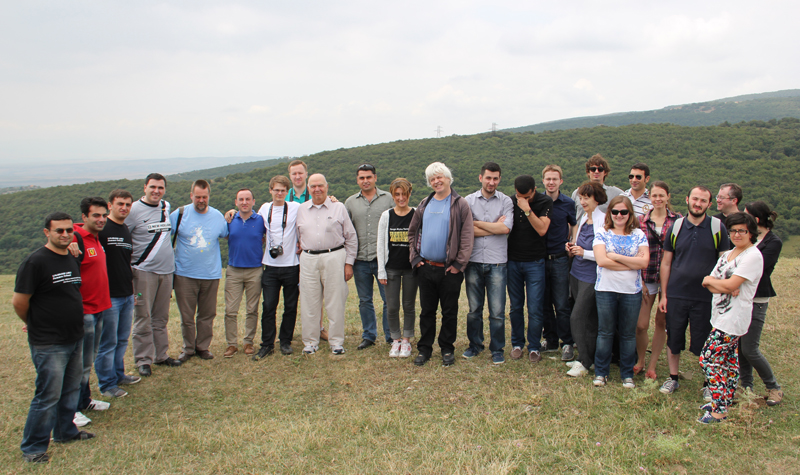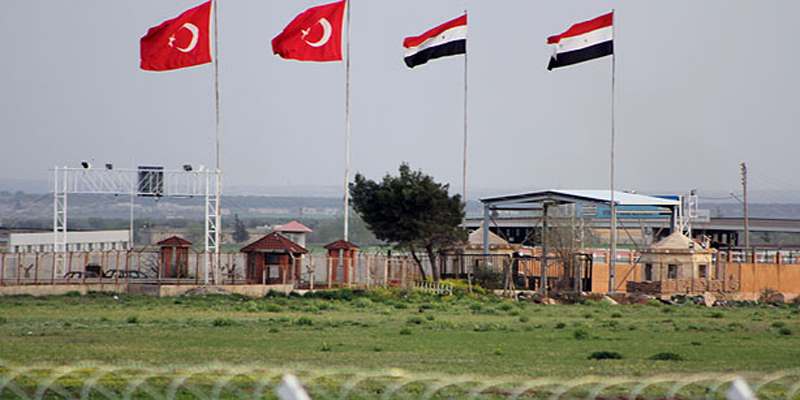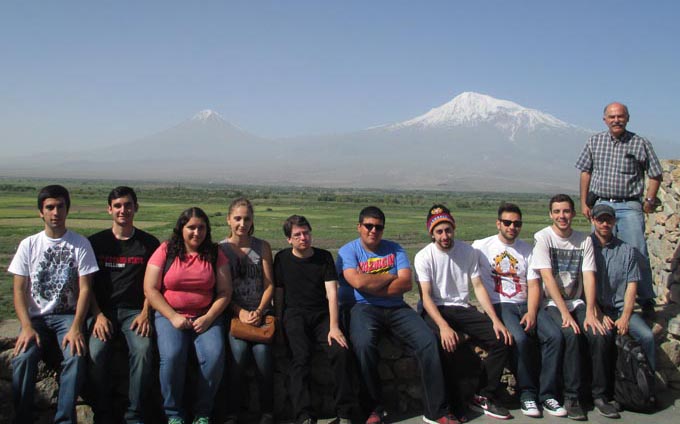TBILISI — Professor Richard Hovannisian was invited to Tbilisi (Tiflis) by the Georgian National Archives to participate in a week-long seminar, July 17-23, on the First Georgian Democratic Republic. As a pioneering historian of the First Armenian Republic, Hovannisian was seen as a model for the young Georgian, Armenian, Azeri, Russian, Lithuanian, Polish, Italian, French, British, and American scholars in attendance.
During the presentations by Georgian lecturers on the historical, constitutional and legislative, political, social, economic, cultural, educational, religious, military, and interethnic aspects of the Georgian Republic, Professor Hovannisian regularly offered constructive comments and comparative insights. The seminar included excursions to the old city of Tiflis, its former Armenian upper class Solalaki quarter, Freedom (formerly Yerevan) Square, Rustaveli (formerly Golovinsky) Prospect, with its government buildings and grand former Armenian mansions, the Georgian National Library and Manuscript Center, the Opera and State Museum, and the historic capital city of Mtskheta. In addition, a day was spent on the heights of Kojori, where the final battles took place before the Red Army advanced into Tiflis in March, 1921 to end the Georgian Democratic Republic and begin the period of the Georgian Soviet Socialist Republic.


Hovannisian joined His Eminence and the youth group on a pilgrimage to the Armenian Pantheon, a small part of the former vast Armenian Khojavank cemetery in the Halvabar quarter of Tbilisi to plant a tree near the monuments of Raffi, Sundukian, and other noted Armenian writers and intellectuals. Much of Khojavank and its Church of Holy Mother of God (Astvatsadzin) were demolished at the command of Stalin’s henchman, Lavrenty Beria, in the 1930. Recently, the enormous Georgian Orthodox Cathedral of the Holy Trinity has been built on the site of the cemetery, exposing numerous tombs, about which various protests proved to be of no avail. Down the hill from the cathedral is the Armenian “Etchmiadzin” Church and just across the Kura River, the Armenian Cathedral of Saint Gevorg.
The week of conferences, talks, and excursions proved both interesting and instructive for the seminar participants. It was apparent that until recently the Georgian scholars and public had far less knowledge and awareness of the First Georgian Republic than Armenians had about their First Republic, perhaps because of the existence of a large Armenian Diaspora during the Soviet years.










